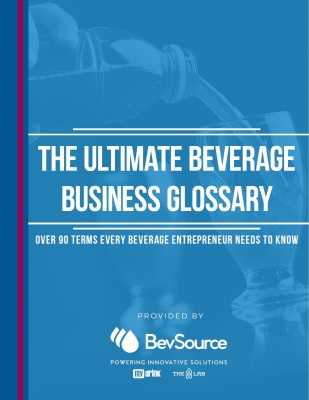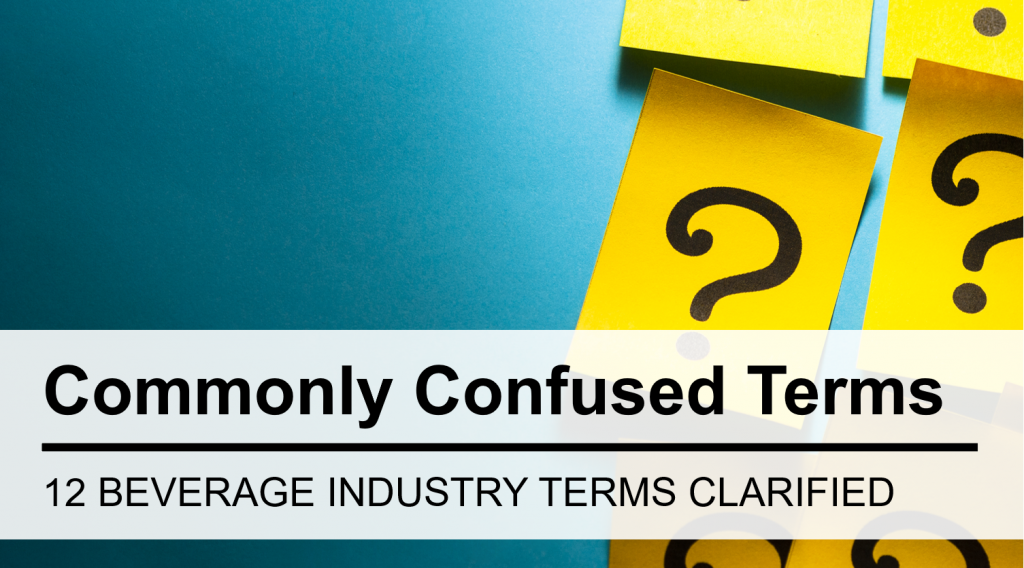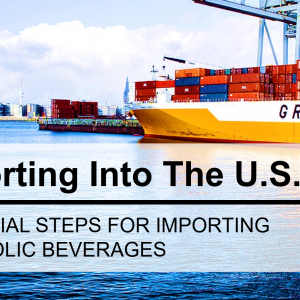The beverage industry has become more advanced and sophisticated with each new development. From sourcing to production, compliance and logistics, there is a lot to learn as you plan and manage each area of your beverage business.
Over our more than 16 years of helping beverage entrepreneurs navigate their beverage journeys, we’ve noticed that there are some confusing concepts and terms that tend to trip up even experienced beverage professionals. Here is a clarifying look at some of the most commonly confused or misunderstood beverage industry terms.
Recipe vs Commercial Formula
Many people new to the food and beverage industry think they can easily move from making a beverage in their kitchen to mass production simply by scaling their recipe. There is an important distinction between a recipe and a scalable commercial formula.
Recipe – A recipe is the ingredients and set of instructions that describes how to prepare or make your beverage at home or in a restaurant. The results of a recipe typically vary from batch-to-batch depending on the person making it, the measuring methods they use, and the accuracy of their measurements and adherence to the recipe.
Commercial Formula – A commercial formula is a fixed set of specific ingredients listed in percentage by weight and standardized processing instructions to consistently make your beverage at scale. All of the ingredients in a commercial formula total 100 percent, so your formula can be scaled up or down depending on production demands.
Aseptic Filling vs Hot Filling vs Cold Filling
As beverages become more complex and functional, choosing the right beverage preservation method has become even more critical. The right methods will keep your beverage safe, maintain product quality and nutritional value, and meet your storage and shelf-life requirements.
There are several options designed to fit different beverage needs, and each is based on an in-depth understanding of science in areas like chemistry, physics, and thermodynamics. While you don’t have to understand all of the intricacies of each method, it is vital to know the primary differences between them. Some of the common terms you’ll encounter when learning about preservation methods are aseptic filling, hot filling, and cold filling.
Aseptic Fill – In the aseptic process, the aseptic filler sterilizes the packaging material, fills the sterile product into the package in a sterile environment, and then hermetically seals the package. Aseptic filling is appropriate for high-acid products, and the products can last up to 18 months and works well for dairy and beverages in glass, aluminum, or PET.
Hot Fill – In hot filling, the liquid is injected into a large vat where it is heated to a high temperature and held for a short amount of time to sterilize the product. The liquid is then filled at a high enough temperature to sterilize the interior contents of the primary packaging. Hot Filling is often found in facilities filling PET bottles, but can also be used in glass bottles and cans.
Cold Fill – During the cold fill process, the container is pressurized by cooling the product to a temperature between 30 and 60 degrees Celsius. Then the cold product is added to the cold container. The cold fill process requires sterilization, which can be either a wet or dry sterilization. A wet cold-aseptic fill process first sterilizes the containers using steam and peracetic acid, which distributes disinfectant throughout the container. A dry cold-aseptic fill uses hydrogen peroxide as the disinfectant. Cold fill is a common method for fresh products including juice, and milk.
Press Proof vs Prepress Proof
The last thing you want to encounter is an error on your label or packaging after your beverage has gone to production. Having a proofing process helps ensure accuracy in color, content, and layout. Proofs are a tool to help you verify and control the end product before it goes into high-quantity production.
Prepress Proof -A prepress proof is one that is created off the press. Prepress proofs can be electronic or digitally printed. They provide an inexpensive way to see a visual copy of your artwork without actually putting it on the press and applying any major finishing effects.
Press Proof – A press proof gives you a sample of your label printed on the exact type of press that will be used to print your final order. It will show you exactly how your label will look using the specific ink and material at the specified size for your project.
FTL (Full Truckload) vs LTL (Less Than Truckload)
When it comes to shipping your ingredients and finished product, there are many factors to consider to ensure the safest, most efficient, and cost effective options. Two shipping terms that are helpful to understand when weighing your freight options are FTL (Full Truckload) and LTL (Less Than Truckload).
FTL (Full Truckload) – Full truckload (FTL) shipping means that a shipment will take up an entire truck. FTL shipments are made when there are ten or more pallets that need to ship, or if the shipment is high-risk, or under tight time constraints.
LTL (Less Than Truckload) – Less than truckload shipping or less than load (LTL) is the transportation of relatively small freight that will not take up an entire truck. In between parcel carriers and full truckload carriers, LTL shipments typically weigh between 151 and 20,0000 lbs. The main advantage of using an LTL carrier is that a shipment may be transported for a fraction of the cost of hiring an entire truck. With an LTL shipment, you only pay for the space on the truck you need. LTL freight shipments will often take a bit longer to reach their destinations, due to the multiple shipments on board creating frequent stops.
Health Claim vs Authorized Health Claim vs Qualified Health Claim
Understanding how and when you can make health claims on or about your beverage is an essential aspect of building a successful, sustainable brand. The FDA’s definitions and rules surrounding health claim usage can be confusing. It is important to understand the difference between terms like authorized and qualified health claims to ensure what your label says is okay with the FDA.
Health Claims – A health claim is a statement that creates a relationship between a product and some type of health benefit. For example, an ingredient may be tied to reduced risk for heart disease or some other condition. Health claims require scientific evidence to be deemed acceptable for use. There are two different levels of health claims that dictate just what evidence is necessary: authorized health claims and qualified health claims.
Authorized Health Claims – Authorized health claims are supported by significant scientific agreement (SSA) among qualified experts. In order for the FDA to authorize a health claim, there must be scientific evidence to characterize a relationship between a substance and a disease or health-related condition. All health claims must undergo review by the FDA. You can find authorized health claims that meet the Significant Scientific Agreement (SSA) Standard on the FDA website.
Qualified Health Claims – Qualified health claims are supported by scientific evidence, but do not meet the more rigorous “significant scientific agreement” standard required for an authorized health claim. To ensure that these claims are not misleading, they must be accompanied by a disclaimer or other qualifying language to accurately communicate to consumers the level of scientific evidence supporting the claim.
 As the beverage industry evolves with more opportunities, ingredients, regulations, and technology, the terminology will continue to progress and expand. The better you understand the nuances of the beverage world, the more prepared you are to navigate the decisions and details of the future.
As the beverage industry evolves with more opportunities, ingredients, regulations, and technology, the terminology will continue to progress and expand. The better you understand the nuances of the beverage world, the more prepared you are to navigate the decisions and details of the future.
New to the beverage space or need a refresher on terminology? Check out our FREE Ultimate Beverage Business Glossary with definitions of more than 90 beverage terms.
This article was originally posted on our parent company, BevSource’s blog here.


